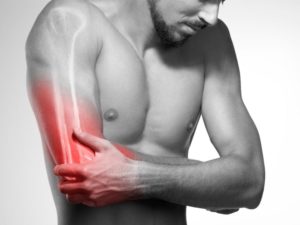Top 4 Dislocations That Occur from Auto Accidents

You may associate a dislocated joint with a sports injury, and while this is a common cause, other traumas can lead to the issue as well, including auto accidents. Everything from a minor fender bender to a severe collision can lead to the joints in your body becoming dislocated, which may have serious and chronic impacts on the body. While any joint is susceptible to this, there are particular areas of the body that are especially vulnerable in a car crash. Based on the patients we see at our accident and injury clinic, below are some of the dislocations you should be on the lookout for after a crash and what to know about the injury.
What Is a Dislocation?
Before we talk about specific injuries, it is helpful to understand what exactly a dislocation means. A dislocation is an injury of the joint, which is any place where two or more bones come together in your body. When these bones are moved from their natural positions, they are considered dislocated. This is a painful injury that usually leads to a temporary deformation and immobilization of the joint.
In some cases, dislocated joints can be repaired quickly with the help of an accident and injury clinic, but the injury may continue to have consequences that are long-term.
Fingers
While they’re small, our fingers contain multiple joints- what we think of as knuckles. And because of their size, fingers can also be very fragile and susceptible to injuries like dislocation. The middle knuckle is particularly likely to become dislocated. In a car accident, many people’s natural instinct is to brace for impact by holding their hands up in front of their body, allowing fingers to hit against a hard surface, or even be stuck between debris and moving parts.
Your finger may be dislocated if you notice a crooked or misshapen joint, one joint appears dislodged, you have swelling or bruising around the joint, or you experience pain and immobility in the finger.
Shoulder
Whether the result of an accident or other injury, shoulders are the joint most commonly dislocated. Your shoulder is made up of three bones- your collarbone, your shoulder blade, and your upper arm bone. The arm bone fits into a cup-like socket in your shoulder blade. In this case, the ball of your bone pops out of your shoulder socket, either partially or completely. This can also happen in any direction, with the bone moving forward, backward, or sideways. Shoulders can become dislocated when you brace for impact or if your shoulder makes blunt contact with a hard surface.
If you suffer from a shoulder dislocation, you may notice severe pain, swelling and bruising, numbness or weakness in your arms, trouble moving, or muscle spasms.
Knee
The knee contains extremely powerful muscles and ligaments designed to keep the bones in place, therefore a very hard impact is usually needed to cause a knee dislocation. When this impact occurs, such as in a car crash, the position of your thigh bone relative to the shin bone can become disrupted and overcome the strength of the surrounding soft tissues. This often leads to damage in ligaments, blood vessels, and nerves in the knee on top of the bone dislocation.
People sitting in the front seat of a vehicle during a crash are often at the most risk of knee dislocation, as sudden forward motion could cause their knees to collide with the dashboard or steering wheel. If this force is strong enough, the Posterior Cruciate Ligament can tear, causing your knee to lose protection against future dislocations. This injury is common enough it is called “dashboard knee” at some accident and injury clinics!
Signs of knee dislocation may include hearing a “popping” sound upon impact, severe pain, inability to straighten the knee or walk, and sudden swelling.
Hip
Less commonly associated with car accidents, hip dislocation can be a serious injury. It is most common for those sitting in the front of a vehicle when the front makes an impact and crumples. Many people will try and slam on their brakes when they see an accident coming, causing them to lock their knees. The crumpling of the car’s front then applies force to the leg and the hip socket, forcing the hip to dislocate. When this occurs, you will usually be unable to walk and notice numbness or tingling along the leg. Serious bruising can also indicate internal bleeding in some cases.
If you suspect a dislocation, always visit an accident or injury clinic and never try to “relocate” the bone yourself.
